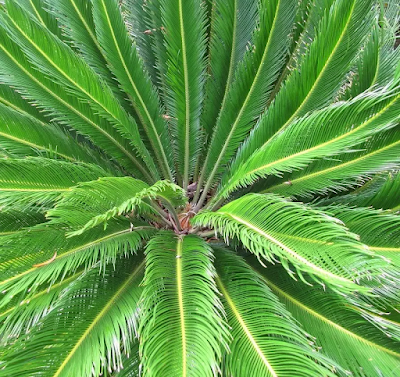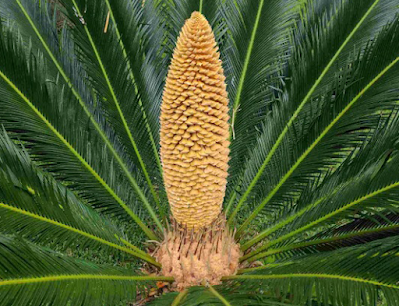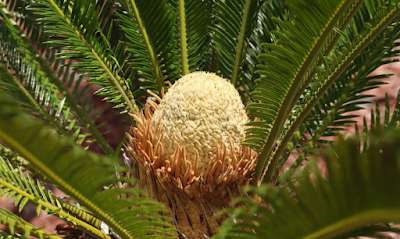The plant features stiff, feather-like leaves that grow in a rosette from the top of a thick, woody trunk. Each frond can reach up to 1.5 meters long and has narrow, pointed leaflets with a deep green color.
The trunk is cylindrical and slow-growing, often giving the plant a bonsai-like appearance when young. Over time, it can reach up to 2 meters tall.
Cycas revoluta grows slowly but steadily. It is usually unbranched, although older specimens may produce offshoots at the base or develop multiple heads.
It prefers well-drained, sandy, or loamy soils and dislikes waterlogging. Slightly acidic to neutral pH is ideal.
Thrives in full sun to partial shade. In hotter climates, some afternoon shade helps prevent leaf scorch.
Moderate water is sufficient. Overwatering is a common mistake and can lead to root rot.
Cycas revoluta is dioecious, meaning individual plants are either male or female. Male plants produce a large, cone-like structure. Female plants develop a crown of loosely arranged leaf-like structures that protect the ovules. Pollination is usually carried out by wind or insects. In cultivation, hand pollination may be used for seed production. Cycas revoluta typically blooms once a year, usually during late spring or early summer, depending on the climate. Widely grown as an ornamental plant in gardens, parks, and indoors due to its exotic appearance. Its slow growth and sculptural form make it a favorite in bonsai cultivation. Ideal for xeriscaping due to its drought tolerance.
The Sago Palm is a living fossil that adds a dramatic, architectural element to any landscape. Its resilience, symmetrical form, and ancient lineage make it a cherished plant for collectors, gardeners, and landscapers alike. While it requires patience due to its slow growth, the reward is a timeless piece of nature’s history thriving in your own garden. All parts of Cycas revoluta are highly toxic, especially the seeds, which contain cycasin, a compound that can cause liver failure in pets and humans if ingested. Extra caution is advised when planting near pets or small children. Cycas revoluta is not currently endangered, thanks to its widespread cultivation. However, other wild cycads are under threat due to habitat loss and illegal collection.
 |
| Cycas revoluta – The Sago Palm |
 |
| Cycas revoluta Young Plants |
 |
| The Sago Palm Young Plants |
 |
| Cycas revoluta – The Sago Palm Young Plant |
 |
| Cycas revoluta – The Sago Palm Leaves |
 |
| Leaves of The Sago Palm |
 |
| Cycas revoluta Leaves |
 |
| Trunk of Cycas revoluta – The Sago Palm |
 |
| Cycas revoluta – The Sago Palm Male cone |
 |
| Male cone of The Sago Palm |
 |
| Male cones of Cycas revoluta |
 |
| Cycas revoluta – The Sago Palm Cone |
 |
| Cycas revoluta Female Megasporophylls |
 |
| Megasporophylls of Cycas revoluta |
 |
Megasporophylls of the Sago Palm
|
 |
| Cycas revoluta – The Sago Palm Seeds |
 |
| Seeds of Cycas revoluta |
 |
| Cycas revoluta – The Sago Palm |
 |
| Cycas revoluta – The Sago Palm |
 |
| Cycas revoluta – The Sago Palm |






















No comments:
Post a Comment